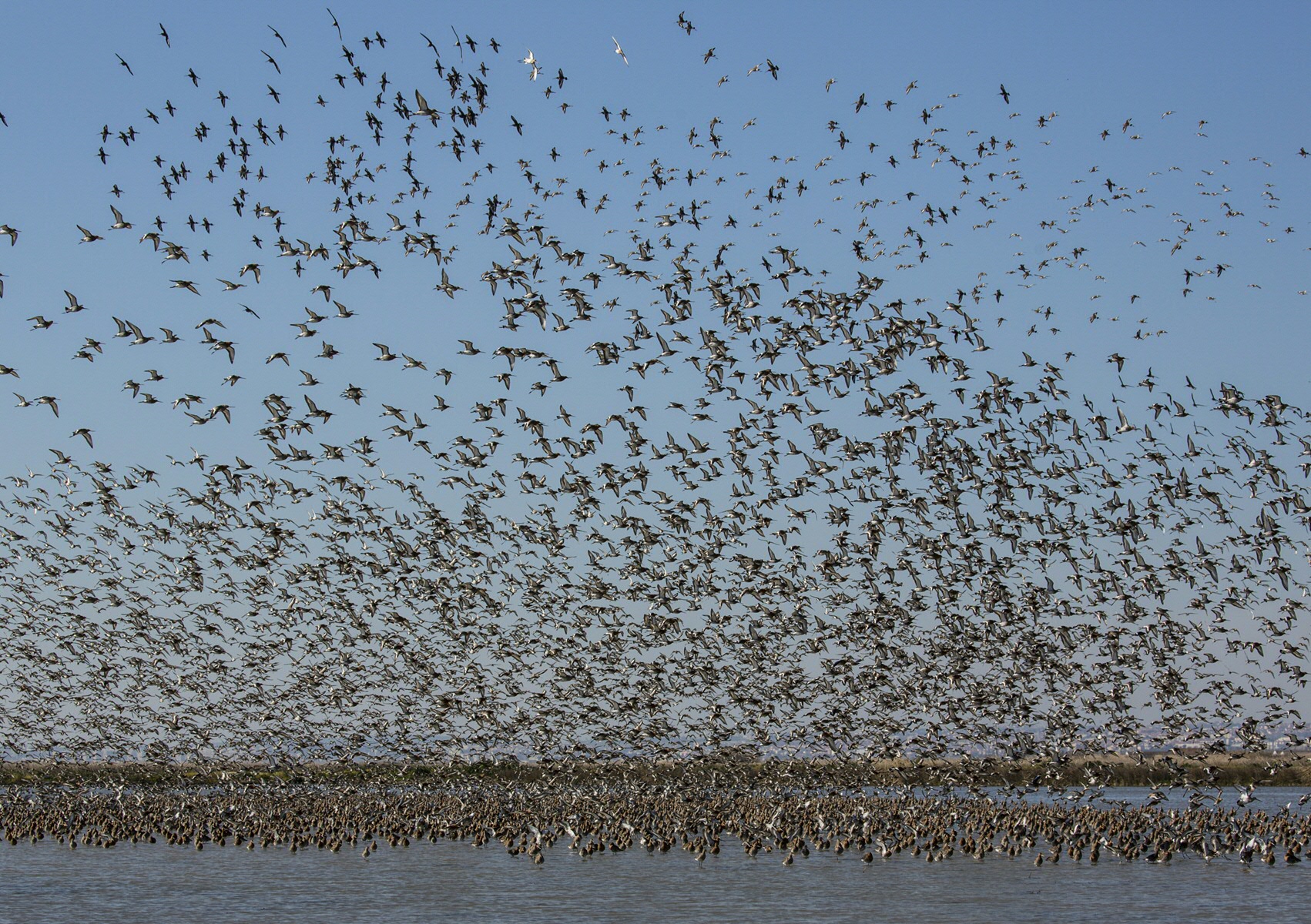Portugese pleisterplaatsen meer in trek bij jonge grutto’s dan Spaanse
Hoe is te verklaren dat de laatste jaren er tijdens de voorjaarstrek steeds minder grutto’s pleisteren in Spanje en steeds meer in Portugal? Mo Verhoeven van de Rijksuniversiteit Groningen en collega’s hebben ontdekt dat de jonge grutto’s deze verandering in het trekpatroon bewerkstelligen. Bijna alle volwassen vogels blijven namelijk op de trek naar Nederland trouw aan hun normale route: ofwel via Portugal langs de kust of via het binnenland van Spanje. Het onderzoek is 14 februari 2018 gepubliceerd in Biology Letters.
In de jaren rond 2007 werden er tijdens de voorjaarstrek nog zo’n 24.000 continentale grutto’s (Limosa limosa limosa) in het Spaanse Extremadura geteld en ruim 44.000 in de Portugese estuaria van de Taag (Tejo) en de Sado. In de periode 2013-2017 telden onderzoekers van de Rijksuniversiteit Groningen nog maar ca. 10.400 grutto’s in Extremadura en wel ca. 51.400 in de twee Portugese gebieden. De vogels gebruiken de plaatsen als tussenstop op hun voorjaarstrek van West-Afrika of Zuid-Spanje naar noordelijke broedgebieden.
Verandering door jongeren
Als antwoord op omgevingsveranderingen kunnen soorten hun trekgedrag aanpassen. Dat is bekend. Welke biologische processen deze gedragsveranderingen mogelijk maken is een volgende vraag. Mo Verhoeven en zijn collega’s hebben in het geval van de voorjaarstrekroute van grutto’s aangetoond dat het de jongere generatie is die verschuift naar Portugal. De plasticiteit binnen de ontwikkeling van de jonge vogels maakt dit blijkbaar mogelijk.
Behoudende volwassenen
Aanpassingen in uiterlijk of gedrag binnen een populatie kunnen ook optreden dankzij genetische veranderingen of dankzij de flexibiliteit in de mogelijkheden van een individu. In dit geval bleken beide situaties niet aan de orde. In de meetperiode van vijf jaar (één jaar langer dan de gemiddelde gruttoleeftijd) bleken de volwassen grutto’s behoudend, ze werden jaar op jaar teruggezien op hun vaste pleisterplekken. De verschuiving in gedrag legde derhalve een generatiekloof bloot: zoals de ouden vlogen, vliegen niet altijd hun jongen.
Rijstvelden
Waarom de populariteit van ‘de Portugese route’ langs de Atlantische kust blijft groeien ten koste van ‘de Middellandse-Zeeroute’ over het binnenland van Spanje, is niet duidelijk. Het kan te maken hebben met veranderde windrichtingen, maar ook met de uitbreiding van de rijstvelden rond het estuarium van de Taag.

Meer informatie
-
Publicatie in Biology Letters, 14 februari 2018; DOI http://dx.doi.org/10.1098/rsbl.2017.0663
-
Generational shift in spring staging site use by a long-distance migratory bird
Mo A. Verhoeven1, A. H. Jelle Loonstra1, Jos C. E. W. Hooijmeijer1, Jose A. Masero2, Theunis Piersma1,3 and Nathan R. Senner1
1Conservation Ecology Group, Groningen Institute for Evolutionary Life Sciences, University of Groningen, 2Conservation Biology Research Group, Department of Anatomy, Cell Biology and Zoology, Faculty of Sciences, University of Extremadura, Avenida de Elvas, Spain, 3NIOZ Royal Netherlands Institute for Sea Research, Department of Coastal Systems and Utrecht University, PO Box 59, 1790 AB Den Burg, Texel, The Netherlands
-
Contact: Mo Verhoeven of Theunis Piersma
Meer nieuws
-
02 december 2025
Student Menna Zahran wint Unilever Research Prize
-
27 november 2025
Vliegtuigen spotten met een radiotelescoop
